A Final Month of Women Composers
September 3, 2022
Roscoe, N.Y.
All projects must end, I suppose. For the past 6 months I’ve been posting music of women composers on Facebook, and then consolidating and expanding those posts in this blog. I’ve now finished with a total of over 180 women composers. (I haven’t done a final count and I’ve also been silently inserting additional noteworthies into the mix.)
All blog entries on women composers have now been consolidated in the new web site Women Composing.
It has been a sheer pleasure searching out and sharing this music, and I hope that these blog entries provide a convenient source for others to explore the music of these composers. There are undoubtedly many other composers whose music also deserves a spot here. If you know of anyone, let me know.
The first five blog installments are:
Here are women composers born between 1982 and 2005:
Courtney Bryan (born 1982)
Courtney Bryan was born in New Orleans. She obtained a Bachelor of Music from Oberlin, a Master of Music from Rutgers, and a Doctor of Musical Arts from Columbia. Her compositions integrate jazz and modernist idioms (including electronic music) with influences from gospel and spirituals. She currently teaches at Tulane.

Courtney Bryan’s music has been increasingly informed by activism. Such is the case with the powerful and unnerving Yet Unheard from 2016, which is a response to the death of Sandra Bland, the woman who was found hung in a jail cell in Texas after three days in police custody following an arrest during a traffic stop. I posted a video of Yet Unheard in my survey on Black Composers
This is a 2018 composition for piano, violin, cello, and clarinet called Elegy. Courtney Bryan has said that this work is a response to “Strange Fruit,” the anti-lynching song by Abel Meeropol made famous by a 1939 recording by Billie Holiday. One can hear fragments of the song in Bryan’s composition.
Reena Esmail (born 1983)
Reena Esmail is an Indian-American composer born in Chicago and currently living in Los Angeles. She holds degrees from Juilliard and the Yale School of Music, and she has studied Hindustani music in India. Her website states that she “works between the worlds of Indian and Western classical music, and brings communities together through the creation of equitable musical spaces.”
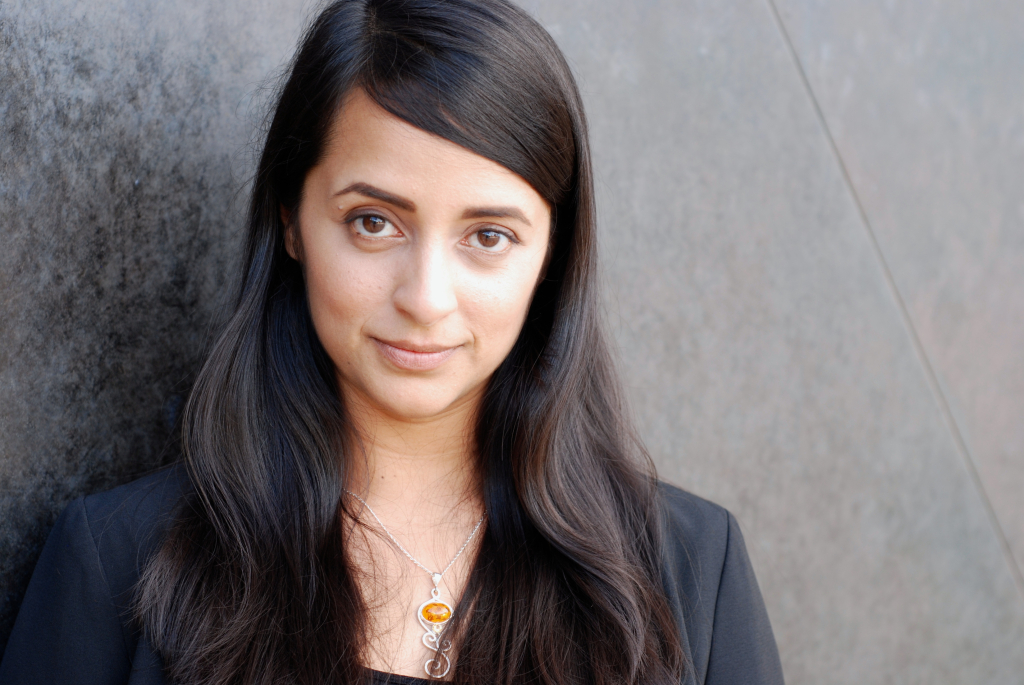
The gorgeous Meri Sakhi Ki Avaaz (My Sister’s Voice) epitomizes one of Reena Esmail’s approaches to the melding of these worlds. This is a 2018 composition for Hindustani vocalist and soprano and instrumental accompaniment that exists in three versions. This video is the version for accompaniment by piano quintet:
Reena Esmail writes:
Meri Sakhi Ki Avaaz, at its core, is a piece about sisterhood. Each movement’s short text epitomizes the one of the many facets of having and being a sister. It is also about what sisterhood looks like when expanded beyond a single family or a single culture— when two women, from two different musical cultures create space for one another’s voices to be heard.
The first movement begins with a recording of the famous Flower Duet from Delibe’s opera Lakme, but then as it might be sung by a Hindustani singer rather than the orientalist conception of Indian women from 1880’s France. The second movement is a classical Hindustani bandish with the singers singing in two different raags. The third movement also uses two different raags that are opposites of each other. At the end of the video, the composer appears in front of the stage.
This is her lovely Piano Trio from 2019:
Ann Cleare (born 1983)
Ann Cleare was born in County Offaly, Ireland. She studied at University College Cork where she earned an MPhil, and at Harvard University where she completed a PhD in composition. She is currently an Assistant Professor at Trinity College Dublin.

Ann Cleare composes music for traditional orchestras, ensembles, and solo instruments, but she also works in electronics, sonic environments, and hybrid instrumental design. Her website states that Ann Cleare’s work “explores the static and sculptural nature of sound, probing the extremities of timbre, texture, colour, and form.”
Ann Cleare’s music is less concerned with traditional notions of melody, harmony, and rhythm, and more focused on creating a sonic landscape. Her 2009 composition inner exists in three versions for cello, viola, or violin, accompanied by piano. Here’s the cello version:
She has written:
Inner probes the idea of a subcutaneous space within sound. Through its kinetic activity and autoscopic tendencies, the piece aims to explore internal structures of sound and turn them outward: isolating, focusing on, and revealing sounds in their time and space. The piano and cello are dependent on each other to function. They alternate the roles of what is considered interior and exterior: within harsh timbral worlds there are intricate, smaller worlds at work, and within large delicate worlds, harsh inner worlds exist. Inner worlds grow, escape, separate from, and intrude on, the outer world. Outer worlds encompass, surround, protect, support and dissolve into inner worlds.
Her 2012-13 composition phôsphors (… of ether) separates the orchestra into three instrumental "islands": violins at the top, violas and cellos in the middle, and double-bases and brass at the bottom. “A fourth composite of timpani, percussion, and harp act not so much as an island but as a mobile force, a sonic antennae that can branch its ears and handles outward to all three islands, moving between them, carrying sonic colours, energies, and matter amongst them.”
For her composition eöl (composed 2014-15), she has designed small percussion instruments for accompaniment by clarinet, saxophone, accordion, cello, and double bass. She writes:
The collection of percussion instruments is based around the melding of different metals to create unusual timbres and resonances. These include metallic arm and hand pieces that the percussionist simultaneously wears and plays, and a metallic table instrument with rods that detach on to the percussionist’s fingers.
The title eöl alludes to the Aeolian harp, whose strings are vibrated by wind and hence played without human intervention, but also the Tolkien character, who is a skilled metallurgist.
Mary Kouyoumdjian (born 1983)
Mary Kouyoumdjian was born in northern California where her Armenian parents relocated after escaping the Lebanese Civil War. She has an B.A. in Music Composition from the University of California, San Diego, an M.A. in Scoring for Film & Multimedia from New York University, and a D.M.A. and M.A. in composition from Columbia University.
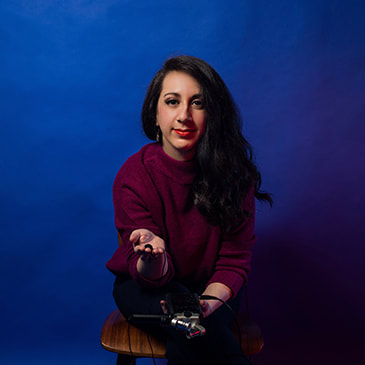
Her website describes her like this:
MARY KOUYOUMDJIAN is a composer and documentarian with projects ranging from concert works to multimedia collaborations and film scores. As a first generation Armenian-American and having come from a family directly affected by the Lebanese Civil War and Armenian Genocide, she uses a sonic palette that draws on her heritage, interest in music as documentary, and background in experimental composition to progressively blend the old with the new. A strong believer in freedom of speech and the arts as an amplifier of expression, her compositional work often integrates recorded testimonies with resilient individuals and field recordings of place to invite empathy by humanizing complex experiences around social and political conflict.
Her 2014 composition Bombs of Beirut is characteristic of Mary Kouyoumdjian’s approach to music and testimony. This powerful and moving work is described on her website like this:
Lebanon, once the refuge where my grandparents and great-grandparents sought safety from the Armenian Genocide, became the dangerous home my parents and brother were forced to abandon during the Lebanese Civil War (1975-1990). We often read stories and see images in the news about violent events in the Middle East, but we very rarely get to hear the perspective of an individual who lived through them. Inspired by loved ones who grew up during the Lebanese Civil War, it is my hope that Bombs of Beirut provides a sonic picture of what day-to-day life is like in a turbulent Middle East –– not filtered through the news and media, but through the real words of real people. The prerecorded backing track includes interviews with family and friends who shared their various experiences living in a time of war; it also presents sound documentation of bombings and attacks on civilians tape-recorded on an apartment balcony between 1976-1978.
Bombs of Beirut is performed by the Kronos Quartet, who commissioned the work. The three movements are titled “Before the War,” “The War,” and “After the War”:
Ellen Reid (1983)
Ellen Reid (not to be confused with the vocalist and keyboardist of Crash Test Dummies) was born Oak Ridge, Tennessee. She attended Columbia College, Columbia University, where she started composing. She earned a BFA from Columbia and an MA from California Institute of the Arts.

Together with Missy Mazzoli, Ellen Reid cofounded Luna Composition Lab, a mentorship program for young female, non-binary, and gender non-conforming composers.
Ellen Reid won a Pulitzer Prize for Music for her 2018 opera p r i s m with a libretto by Roxie Perkins. The plot involves a mother and daughter dealing with post-traumatic stress following a sexual assault. The opera has had a couple productions, a recording, and was streamed by LA Opera in 2021.
This is a 2018 composition by Ellen Reid entitled Oscillations | 100 Years and Forever for chorus, four solo singers, percussion, and video projections. It was commissioned by the Los Angeles Philharmonic to celebrate their 100th anniversary and performed as an installation in the Keck Amphitheatre.
The libretto is by Sarah LaBrie, but I could not locate the text of the libretto or any other information about this work.
Anne Leilehua Lanzilotti (born 1983)
Anne Leilehua Lanzilotti is a Kanaka Maoli (one of the indigenous Polynesian people native to the Hawaiian Islands) who grew up in Honolulu and began her musical education taking private violin lessons. She later attended the Oberlin College Conservatory of Music, Yale School of Music, and the Manhattan School of Music. She currently teaches composition and viola at the University of Hawaii at Mānoa.

Anne Leilehua Lanzilotti’s website states that her music “is characterized by explorations of timbre and interest in translating everyday sounds to concert instruments using nontraditional techniques.” Her orchestral composition with eyes the color of time was a finalist for the Pulitzer Prize in Music in 2022. (It’s been recorded, but a life performance on YouTube is not available.)
Her 2017 composition koʻu inoa (“my name is”) is based on the anthem Hawaiʻi Aloha and exists in versions for solo violin, viola, and cello, and for orchestra. Here is the version for viola.
Hannah Kendall (born 1984)
Hannah Kendall grew up in Wembley, a suburb of London, the child of parents from Guyana. Her mother was a schoolteacher and her father was a jazz musician. She majored in voice and composition at the University of Exeter, was awarded a Masters at the Royal College of Music, and studied arts management of the Royal Welsh College of Music and Drama. She is currently a Doctoral Fellow in composition at Columbia University.
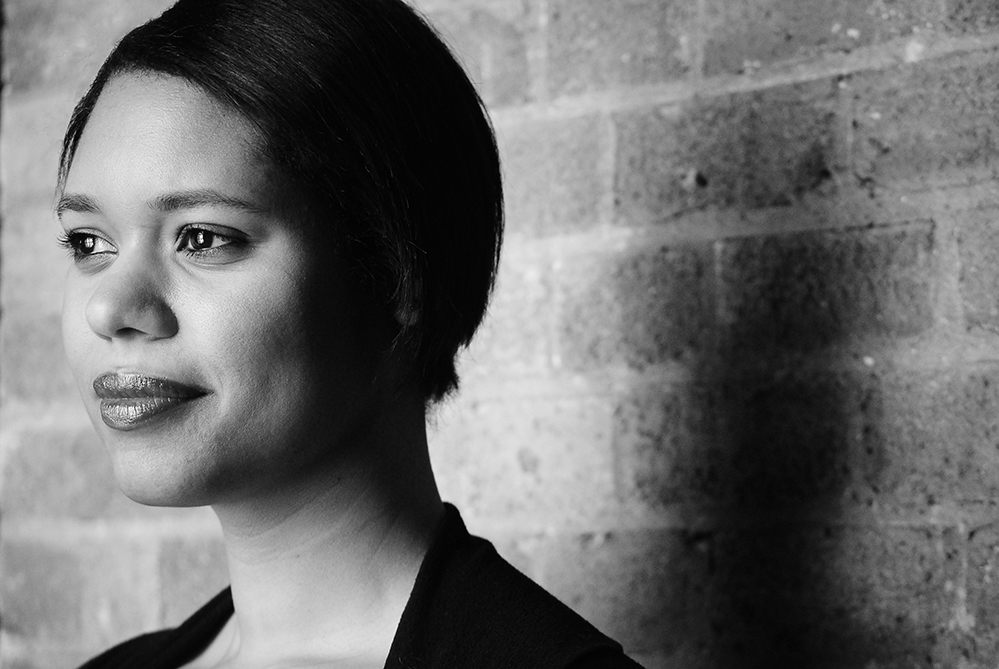
Hannah Kendall has composed for orchestra, chamber ensembles, and solo instruments. Her first opera The Knife of Dawn is based on the incarceration of Guyanese political activist Martin Carter, and takes place in his prison cell at the end of a hunger strike in 1953. An opera-in-progress is based on a short story Tan-Tan and Dry Bone by Jamaican-born writer Nalo Hopkinson.
Artwork and activism often work as springboards for Hannah Kendall’s music. Her 2018 piano composition Processional is inspired by a 1965 painting by Normal Lewis of the Selma to Montgomery March:
Of her first string quartet, Glances / I Don’t Belong Here from 2019, Hannah Kendall writes:
Glances / I Don’t Belong Here is inspired by the British-Guyanese artist Ingrid Pollard’s Pastoral Interludes, a series of photographs in which her Black British subjects are posed in the Lake District, the epitome of rural Britain; exploring the notion of alienation and ‘otherness’ in such spaces. In a similar way, this collection of seven miniatures are musical snapshots of my most cherished non-urban settings, and the experiences that can accompany each visit.
The seven movements are quite short and are titled after the composer’s favorite places: Vik [a village in Iceland], Eryri [in Wales], Kaieteur [Guyana], Vigia [Portugal], Portrush [Northern Ireland], Henlow [England], and Argyll [Scotland].
She has so far written 10 compositions in her “Tuxedo” series, which are based on various sections of Jean-Michel Basquiat’s large 1982 painting of the same name. Here is Tuxedo: Hot Summer No Water from 2020 for cello and hand-cranked (and hand-punched) music box. The cello also vocalizes and blows an ACME Metropolitan Whistle:
This video is of her 2021 composition Tuxedo: Crown: Sun King for cuffed violin, voice, and five wind-up music boxes. (A “cuffed violin” is a violin whose sound has been altered by placing dreadlock cuffs — jewelry for decorating dreadlocks — around some of the strings.)
This video begins with an introduction. The music begins at about 6 minutes in. At about the 14:15 mark, the violinist is joined onstage by the composer to discuss the piece.
Nina C. Young (born 1984)
Nina C. Young was born in Nyack, New York, and began teaching herself violin at the age of 12. She studied engineering and music at M.I.T., receiving degrees in both ocean engineering and music. She has an M.Mus. degree from McGill University and a doctorate in music composition from Columbia University.
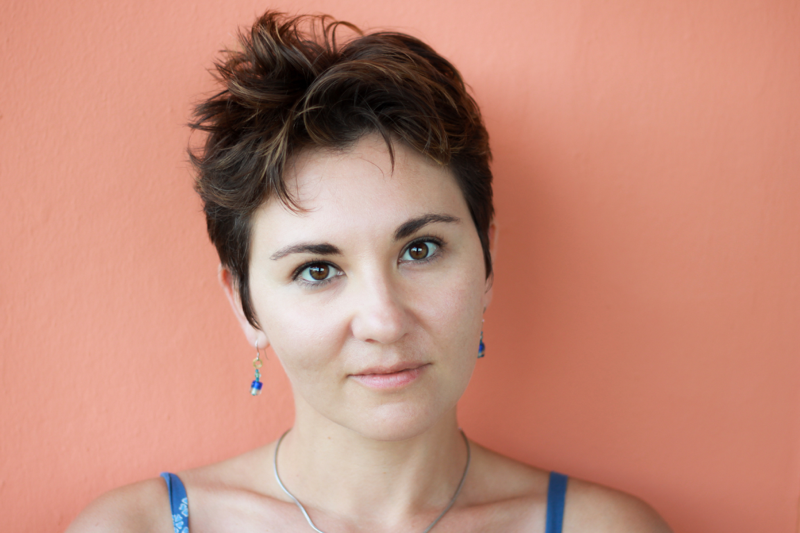
Nina C. Young has composed music for orchestras, chamber ensembles, and solo instruments, but often combines traditional instruments with electronics. Her website states that her music
is characterized by an acute sensitivity to tone color, manifested in aural images of vibrant, arresting immediacy. Her music voice mixes elements of the classical canon, modernism, spectralism, American experimentalism, minimalism, electronic music, and popular idioms. Her projects, ranging from concert pieces to interactive installations, strive to create unique sonic environments that explore aural architectures, resonance, and ephemera.
This is a 2012 composition by Nina C. Young entitled Sun Propeller for violin and electronics. The composer is on the laptop.
Etched in Sand, a 2013 composition for percussion sextet, has at times a Balinese flavor:
Zosha Di Castri (born 1985)
Zosha Di Castri was born in Calgary, Alberta. She earned a Bachelors of Music in Piano Performance and Composition at McGill University, and a Doctor of Musical Arts at Columbia University, where she is now an Assistant Professor of Composition.
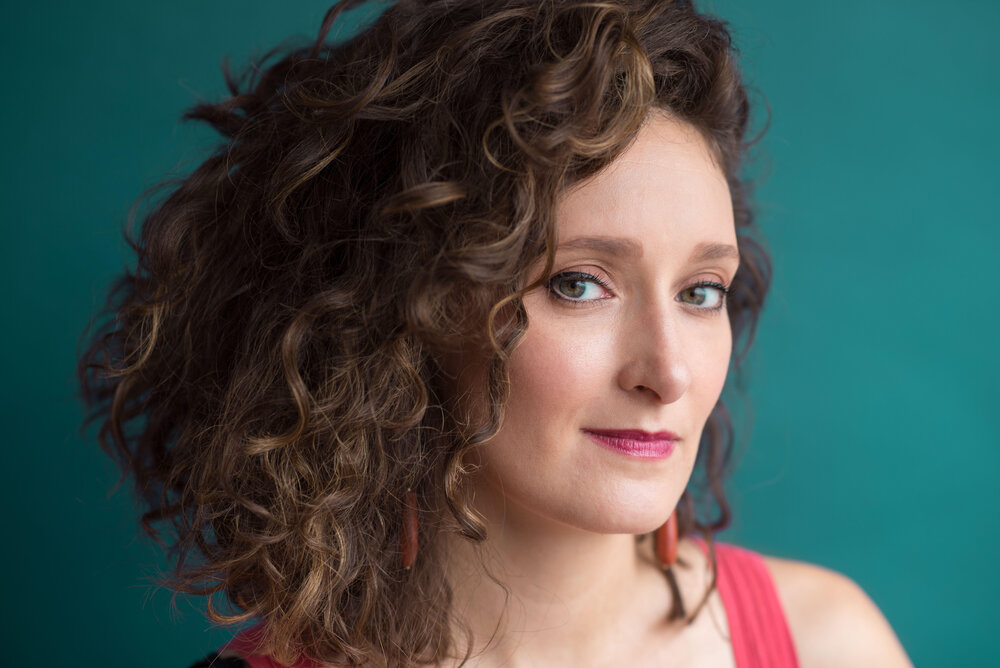
Zosha Di Castri’s music reveals a modernist sensibility but with frequent surprises. Her compositions have episodes of lyrical beauty, sudden tumultuousness, enticing almost-toe-tapping rhythms, intricate counterpoint, and thrilling crescendos.
Here is her 2016 String Quartet No. 1:
It is described on her website like this:
Both purely abstract and sonically concrete, this quartet explores virtuosic shifts between quickly contrasting modes of expression, while demanding a physical internalization of a dense thicket of activity. Escaping the agitation and frenzy are moments of melodic beauty, microtonal introspection, and a delicate fabric of time-suspending harmonics.
This seems to be Zosha Di Castri’s most recent composition. It’s for an ensemble of 13 musicians (including two percussionists) entitled “time>>T. - - I. - - M.(time) - - E.” but conveniently simplified as “Time-Time-Time.”
Gity Razaz (born March 22, 1986)
Gity Razaz was born in Tehran and began studying music at the age of seven. She has bachelor’s and master’s degrees in composition from the Juilliard School.
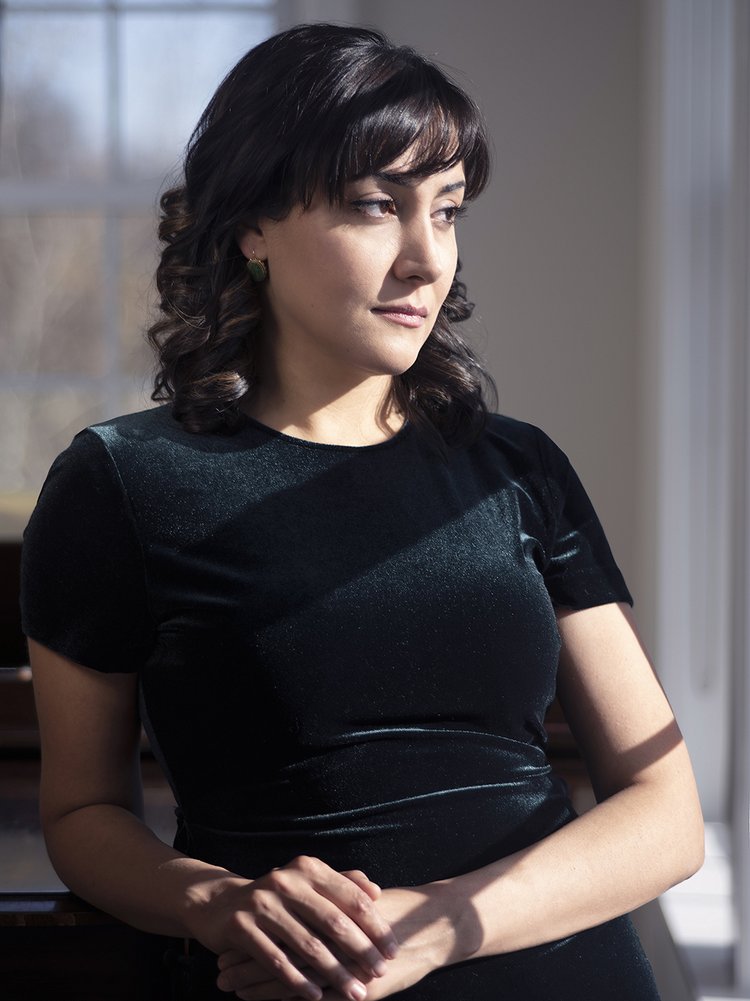
Gity Razaz has composed music for orchestra, chamber ensembles, solo instruments, and voice, sometimes incorporating electronics, and has written several ballet scores. Her work is generally quite melodic with occasional influences of Persian music.
This Duo for violin and piano dates from 2007, Gity Razaz’s second year of composition studies at Julliard. She describes it on her website like this:
Duo for violin and piano is an adventurous study of a single tune explored in various ways within the two movements of the piece. The tune appears at the opening of each movement in the violin part, and sets the mood for the entire movement, during which the melody is fragmented, developed, and at times completely transformed into new material.
The Strange Highway is a 2011 work for eight cellos. The title comes from a poem by Chilean novelist Roberto Bolaño. Gity Razaz writes:
I was moved by the subtle but potent sense of desolation and vulnerability expressed through the poem’s powerful imagery. My attempt in writing the piece was to capture and recreate these emotions through rhythmic and violent opening and closing sections that engulf a lyrical, emotionally and dramatically charged middle section that uses dense, contrapuntal melodies and rich harmonies.
The Strange Highway is performed here by cellist Erin Snedecor with overdubbing and extensive video editing.
Here haunting A Prayer for the Abandoned is a 2015 work for piano trio. The three movements are played attacca (without a pause):
Sarah Davachi (born 1987)
Sarah Davachi was born in Calgary. She graduated from the University of Calgary, and has a master’s degree in electronic music and recording media from Mills College. She is currently a doctoral candidate in musicology at UCLA.

Sarah Davachi composes glacially meditative electro-acoustic music with a focus on timbre. Although she has written compositions for various chamber ensembles, much of her music is for organ often used as a nascent synthesizer, with and without various types of electronic accompaniment. She has released ten full-length albums of her music and often performs live.
Her website describes her work as
concerned with the close intricacies of timbral and temporal space, utilizing extended durations and considered harmonic structures that emphasize gradual variations in texture, overtone complexity, psychoacoustic phenomena, and tuning and intonation. Her compositions span both solo and chamber ensemble formats, incorporating a wide range of acoustic and electronic instrumentation. Similarly informed by minimalist and long-form tenets, early music concepts of intervallic and modal harmony, as well as experimental production practices of the electroacoustic studio environment, in her sound is an intimate and patient experience that lessens perceptions of the familiar and the distant.
“Instrumental II” is the second of three videos created by Sarah Davachi last year. In this one she plays a classic Hammond B-3 organ from 1957 and demonstrates what the instrument really sounds like if we truly listen to it rather than just passively hearing it.
This is one of a series of concerts hosted by the Experimental Sound Studio called The Quarantine Concerts. It was recorded on April 7, 2020:
Aida Shirazi (born 1987)
Aida Shirazi was born and raised in Tehran where she received formal training in both Western and Iranian classical music. She received a degree in classical piano from the University of Art in Tehran and a B.M. in music composition and theory from Bikent University in Turkey. She is currently a PhD candidate in composition at the University of California, Davis.

Her Lullaby for Shattered Angels is a 2014 composition for flute, viola, and harp. The description of this video indicates that it is based on a Kurdish lullaby that Aida Shirazi had heard sung by an Iranian Kurdish singer. She writes at at the time she composed this work,
I was involved with the idea of using pre-existing musical materials in my music. I wrote a few pieces in which I quoted Iranian classical or folk melodies and based the entire compositional process on them.
About her 2017 string quartet “Umbra”, Aida Shirazi has written:
umbra is a process, in which musical events unfold glacially. Writing this piece, I sought to create a shadow-like quality; a sonic umbra. The work emerges from a dark and quiet state and after several dynamic and textural swells and contractions fades into the void.
Blood Moon is a 2020 composition for clarinet and string quartet:
The description in the video indicates that the title comes from closing paragraph of the Prayer by the Armenian poet Siamanto:
…And the dark night was deserted, like the vast infinite;
And, with the lonely and bloody moon,
Like a myriad motionless marble statues,
All the dead bodies of our earth arose to pray for one another.
The composition also makes use of the Armenian folk song, “Loosin Valav” (The Moon Has Risen).
Natasha Stojanovska (born 1987)
Natasha Stojanovska was born in Prilep, Macedonia. She received a Bachelor of Music in Piano Performance from Lynn University Conservatory of Music in Boca Raton, Florida, a Master of Music in Piano Performance from Indiana University South Bend, and a Doctorate of Musical Arts at the Bienen School of Music, Northwestern University.

Natasha Stojanovska is primarily known as a pianist. (Here she is playing a work by Polish composer Maria Szymanowska.) But she also composes. Here is her 2008 composition Phantasy No. 1 played by the composer.
Julia Adolphe (born 1988)
Julia Adolphe was born in New York City. She has a Bachelor of Arts degree from Cornell, and a Masters of Music in composition from the USC Thornton School of Music.

Julia Adolphe has composed music for orchestra, chamber ensembles, choruses, solo instruments, and voice. Here is her 2014 string quartet Veil of Leaves which she describes like this:
Veil of Leaves overlaps two mirroring processes: the diverging and merging of musical voices. At first, a single melody unwinds, drifting slowly apart as the music twists and turns. In the wake of this unfolding line remains a fading harmony; the string unisons diverge leaving a swirl of pitches. Like the veins of a leaf, the music branches outward, forming a web of interweaving voices. Two and four-part contrapuntal lines arise from the texture as the melody sounds vertically. In the second half, a veil-like counter-motif appears in the string harmonics, a gesture that is at once airy and transparent as well as highly rhythmic and articulate. To mirror the initial movement of a single pitch moving outward, this second melody descends and merges with a rocketing, energetic ascent in the cello. The low strings rise from the depths while the high violins float downwards. They unite near the opening unison pitch, evoking the color and sound world of the work’s beginning.
White Stone is a 2017 work for orchestra that received it’s world premiere by the New York Philharmonic at the Vail Music Festival:
The composer writes:
A white stone is an object that is both unique yet familiar, a jewel and a pebble, emerging from the dirt to become something treasured. The music rises from dark, murky textures, striving towards brightness and clarity. The cello and timpani are the first to surface from the discord, stirring action in other sections of the orchestra. The percussion serves to rally and activate the music, leading the orchestra upwards towards brighter harmonies and unified rhythms. White Stone captures the struggle to be resilient and powerful in the face of overwhelming obstacles and fear of defeat.
Phyllis Chen (born 1988)
Phyllis Chen started playing piano at the age of 5 and studied at Oberlin Conservatory. She is currently an Assistant Professor of Theory and Composition at SUNY New Paltz.
Phyllis Chen is best known as a fan of the toy piano, an instrument that she only discovered as an adult.

Toy pianos are much smaller than conventional piano (although many are larger than the one she’s holding in the photo) and they have a narrower range. The sound in the toy piano is produced by struck metal bars rather than strings. The toy piano has been used by other composers — most notably by John Cage in Suite for Toy Piano (1948) and George Crumb in Ancient Voices of Children (1970) — but none with quite the dedication as Phyllis Chen. In 2007 she founded the UnCaged Toy Piano composition competition and festival to help promote the instrument.
This is Phyllis Chen’s energetic 2009 composition Double Helix for toy piano and bowls, performed by the composer.
Phyllis Chen has also incorporated hand-cranked music boxes in her work, as in Three Lullabies, a 2014 composition for string orchestra, toy piano, and music box:
The composer is sitting within the string orchestra. Of this composition, she has written:
I’ve always been intrigued by lullabies for they are unique songs with a universal function. People all across the world use lullabies to put their children to sleep through sung stories, reflecting their culture and times, whether true or made up. I have found the simplicity yet bittersweetness of lullabies to remind me of the toy piano. Simultaneously simple and complex, these songs that have the sheen of purity and peace often carry shadows and doubts from the parent singing it.
Tell Me A Tale is like a bedtime story that parents whimsically think up to amuse their children. We often have no idea where the story will go, so we pick a place to start that leads us to unexpected places. We sometimes surprise or even delight ourselves in this but quickly bring the story to an end, hopefully drawing on a moral that fits our liking. The S(w)inging Automata uses my hand-cranked music box. Like a player piano, I create my piece by punching holes out of a card strip so that each hole allows a music box tine to sound when cranked through the mechanism. The mechanical nature of the instrument is both haunting yet inexpressive, which reminded me of the wind-up figurines toys I loved as a child. Drawing Slumber uses a live electronic patch that loops samples of the music box and toy piano, while the strings continue to layer the texture with gradual rhythmic loops, evoking the settling of one’s breathing pattern to sleep.
Dai Wei (born 1989)
Dai Wei, whose name is pronounced “dye way,” was born in China. She completed a B.A. in Music Composition at the Xinghai Conservatory of Music, and then an M.M. in Music Composition at the University of North Carolina in Greensboro. She holds an Artist Diploma at the Curtis Insititute of Music, and is currrently pursuing her doctorate in Music Composition at Princeton University.

Her website states:
Her musical journey navigates in the spaces between east and west, classical and pop, electronic and acoustic, innovation and tradition. She often draws from eastern philosophy and aesthetics to create works with contemporary resonance and reflects an introspection on how these multidimensional conflicts and tension can create and inhabit worlds of their own.
Dai Wei’s 2016 composition Three Pieces for String Quartet is introduced by the composer in this video:
Her 2019 Saṃsāric Dance for orchestra and electronics alludes to the Sanscrit word “saṃsāra,” meaning “world” but also referring to rebith and the cyclic nature of life:
It is Dai Wei’s voice that is heard beginning at about 8:10.
Her composition Song for Shades of Crimson, for solo violin and pre-recorded sounds, was written in 2020 while the composer was in COVID-19 quarantine in China:
The word “crimson” in the title refers to the coloring of maps showing the spread of the pandemic, and the pre-recorded sounds begin with hospital beeps and breathing, later evolving into song. The performance is followed by a brief interview with the composer.
Dai Wei’s 2020 Partial Men is another 2020 composition, and is dedicated to people who donated their organs to extend the lives of others, and it’s almost like a pop song. Dai Wei is seen at the beginning singing in a multitracked recording, and then the Aizuri String Quartet joins her:
The words that Dai Wei sings are in the video’s description section.
Emily Cooley (born 1990)
Emily Cooley was born in Milwaukee. She has degrees from Yale, the University of Southern California’s Thornton School of Music, and the Curtis Institute of Music. She is currently based in Philadelphia.

Emily Cooley’s website states:
Frequently in dialogue with works of contemporary fiction and critical theory, her music questions conventions of narrative, re-imagines emotional expression, and explores the dynamics of power and vulnerability.
Her 2014 piano trio Now is the Time is characterized by gentle textures that only rarely become more agitated:
Emily Cooley’s song Beautiful Small Things (2017) was composed as part of a project to set to music the written words of autistic and primarily nonspeaking young people, in this case the 22-year-old Ryan Harris. The words are “I want to see the world, not by the whole, but by the all too beautiful small things. My overwhelming emotion is that there is always hope.”
Celeste Oram (born 1990)
Celeste Oram grew up in Aotearoa, New Zealand. She is a graduate of the University of Auckland and recently earned a PhD in music composition from the University of California San Diego. Her dissertation — entitled “The Way We Look to a Song: Five Compositions and the Envoicing of Musical Inheritance” — can be found on her website. She now lives in New York City.

Celeste Oram has several ongoing projects, including collaborations “to address legacies of settler-colonial cultures of music and listening” and an exploration of the life of New Zealander Vera Wyse Munro (1897-1966), “a pioneering amateur radio operator and experimental violinist, including the reconstruction of her early-20thC radio equipment and the re-enactment of her telematic musical broadcasts.”
Celeste Oram’s website states:
Celeste’s works are scenarios in which music-making is the catalyst for exploring sonic & social histories, and improvisation … [e]ncompassing instrumental writing, song & speech, electronics, visual media, theatre, and improvisation.
The title of Celeste Oram’s surrealist 2017 composition The Young People’s Guide to the Orchestra alludes to Benjamin Britten’s famous The Young Person’s Guide to the Orchestra, which itself is based a theme by Henry Purcell, and she quotes from Britten’s work as well as other compositions.
But that’s not the strangest aspect of this music. Celeste Oram composed the work “for the NZSO [New Zealand Symphony Orchestra] National Youth Orchestra and 73 battery-powered FM radios.” It soon becomes evident that at least some of these radios are playing prerecorded material, such as the reference to music “performed by the Orchestra of the Age of the Anthropocene conducted by a reconstructed genetic clone of Leonard Bernstein.”
Take note of the early discussion on the radio of the story behind Haydn’s “Farewell” Symphony, for that’s a key to what happens towards the end.
Following the unconventional conclusion of this composition, Celeste Oram appears onstage.
Her 2019 composition a loose affiliation of alleluias is subtitled “concerto for improvising violin and three voices” (of which the composer is one) and, of course, an orchestra:
A page on Celeste Oram’s website provides much more information about the composition, including identifying the “Three Teen Angels” as “Sibyls of the San Fernando Valley. or, the d’Aranyi sisters. or, a popstar supergroup of Joan of Arc, Malala Yousafzai, and Greta Thunberg.”
Georgia Koumará (born 1991)
Georgia Koumará was born in Thessaloniki, Greece, and studied music composition at the Aristotle University of Thessaloniki and the Hamburg University of Music and Theatre. She currently lives and works in Cologne.

Georgia Koumará’s website states:
In her music she is interested in exploring the relationships that occur between conceptual, perceptual and actual measurable time, as it is formulated thought different ontological interpretations, from the process of performance and listening. Thus, by creating, developing and combining different sonic processes, she strives to achieve continuous flux and energy and intricate multi layered textures.
Walk in and find your Supper! is a 2016 composition for flute, clarinet, violin, cello, and soloist. It is based on a children’s game “Huckle Buckle Beanstalk,” which involves hiding an object that others need to find. The instrumentalists and soloist portray characters in this game.
The score (which is shown in another YouTube video of the work) contains numerous instructions for the instrumentalists to look at each other and express certain emotions as if deceiving, rebelling, being relaxed or sad, and to speak certain lines or phrases, some in German and some in English. Most of the score is very precisely notated, but towards the end is an extended section of improvisation.
Shelley Washington (born 1991)
Shelley Washington grew up in Kansas City, Missouri. She has a Bachelor of Arts in Music and a Master of Arts in Education from Truman State University, and a Master of Music in Composition from New York University. She is currently pursuing a PhD in Composition at Princeton University, and she lives there and in Brooklyn.

On her website, Shelley Washington calls herself a “big palette” composer, drawing influences from “jazz, rock, American folk and other musical spaces, new and old.”
My music explores intricate rhythms to encourage a sort of layered listening through grooves, melody, and harmony. In the music I write that confronts known social injustices, I want to create a space for public dialogue while personally reclaiming power for my own experienced inequalities. Shaking the cages, raging against the machine, and supporting others make me happy.
SAY (2016) is for string quartet with voice and body percussion, and incorporates comments and questions that Shelley Washington (who is mixed race) was forced to deal with while growing up:
A more extensive biographical background appears on her website in connection with this composition.
This is Silk, a 2017 composition for piano, double base, vibraphone, and drum kit:
Katherine Balch (born 1991)
Katherine Balch was born in San Diego. She has an M.M. from the Yale School of Music and a D.M.A. from Columbia University. Her website states that her music “captures the magic of everyday sounds, inviting audiences into a sonic world characterized by imagination, discovery, and textural lyricism.”

This is New Geometry, originally composed for an octet in 2015 and then revised for 13 players in 2016.
The title comes from Tom Stoppard’s play Arcadia, concerning the discovery of a fractal math to explore the details of an apple leaf. The composer elaborates:
In my piece, I play with the opposite process: zooming out from and amplifying compact gestures through the harmonic trajectory of the piece, which passes from microtonal to chromatic to diatonic landscapes. The harmonic broadening loosely guides simultaneous trajectories of registral expansion and rhythmic diminution.
Lucy Armstrong (born 1991)
Lucy Armstrong is a British composer based on London. She studied music at the University of Bristol, the Royal Northern College of Music, and the Guildhall School of Music and Drama.
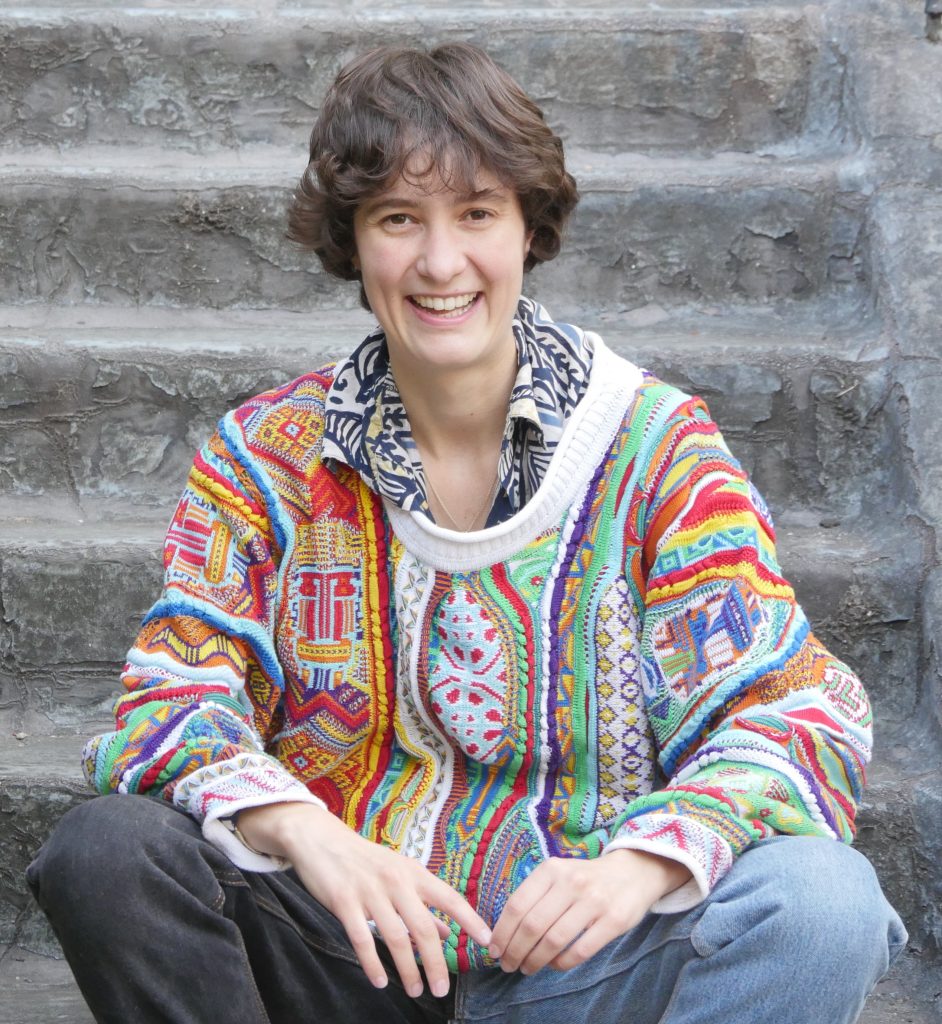
Lucy Armstrong has written music for orchestra and chorus, chamber ensembles, and several short chamber operas, but even her non-operatic works often have operatic scenarios. She describes her 2015 composition Space Adventure like this:
Space Adventure for percussion and loop pedal opens with a group of space adventurers gazing over a barren, eerie landscape. A group of aliens start to march towards them, becoming increasingly sinister and menacing. The adventurers close their eyes and start to sing their theme tune, but are quickly and viciously obliterated. We are left with an air of sadness in the wake of tragic destruction.
Singing Fish (2017) for alto sax and piano is described by Lucy Armstrong (in the description of the video) as being inspired by the Jean Miró painting of the same name:
There’s a whole scenario in the video description, but the clarity of the music is often sufficient to convey the moods of what’s going on.
Executioner’s Pond (2018–2019) portrays a battle of sorts between the instruments:
But amid the excitement [the composer has written], each instrument is stunned into a state of deathly stillness; the piano has been picking them off one by one. We are left with an unsettled, shimmering stillness. Shattered fragments rise and fall like ghostly memories, until all dissolves into nothingness. This piece is about the fragility of life, and the urgency of learning to value our relationships with others before we, or they, disappear.
Gabriella Smith (born 1991)
Gabriella Smith was born in Berkeley, California. She received a Bachelors of Music in composition from the Curtis Institute of Music, and attended Princeton University as a graduate student. She currently lives in Seattle.

Gabriella Smith has composed music for orchestras, vocal ensembles, chamber ensembles, and solo instruments. Judging from the number of YouTube performances, her Carrot Revolution (2015) is quite popular among string quartets, and these videos make it easy to see why.
Her website states:
Whether for orchestras, chamber ensembles, voices, or electronics, Gabriella’s music comes from a love of play, exploring new sounds on instruments, building compelling musical arcs, and connecting listeners with the natural world.
Many of Gabriella’s works address the climate crisis and participation in climate solutions. Through her music, she often tries to provide listeners with an emotional connection to the natural world in an invitation to action.
This is the case with Requiem, a 2018 composition for 8 singers and string quartet whose text consists of a list of the Latin names of species that have become extinct in the last 100 years.
Hexacorallia is another 2018 composition, this one for string orchestra, that in inspired by a series of underwater recordings that the composer made in the coral reefs of French Polynesia:
She writes:
Most people think of the ocean as a silent place, but in reality it is incredibly noisy and vibrant with many species making sound just as we do on the surface.... The piece is filled with these popping, creaking, crunching, and grunting sounds, but my overall goal was not to simply transcribe this soundscape but also to capture that glorious feeling of awe and wonder at dropping my hydrophone down into the water and hearing for the first time this completely new sound world.
But it certainly gets kind of crazy in spots, as if this deep-sea advanture is exploring more than just sound!
Melissa Douglas (born 1992)
Melissa Douglas was born in south-east Australia and is currently based in Melbourne. She studied piano and composition at the Melbourne Conservatorium of Music, and graduated with an MMus in composition from the Royal Northern College of Music in Manchester, England.

This is her 2018 composition “Spheres” for alto saxophone and harp.
Anna Appleby (born 1993)
Anna Appleby was born in Newcastle upon Tyne and is currently based in Manchester. She received a First-Class Bachelor of Arts degree in Music from St Hilda’s College, Oxford; a Masters in Composition from the Royal Northern College of Music; and is now working towards a PhD in Composition there.

This is Anna Appleby’s 2020 composition Uptake for alto saxophone, electric bass, and piano.
Uptake was composed as part of a program of eight collaborations between composers and scientists. The scientist in this case was Rachel Bearon, Professor of Mathematical Biology at the University of Liverpool, and one of the authors of a publication “Multiscale modelling of drug transport and metabolism in liver spheroids.” The music is divided into three miniatures, each of which is inspired by a spherical image in the paper, as described here
13.8 Billion Years for soprano saxophone was created in 2020 in a Zoom collaboartion with saxophonist Amy Green, who performs it hre:
TJ Cole (born 1993)
TJ Cole, who prefers a pronoun of “they,” is originally from the suburbs of Atlanta. They received their Bachelor’s degree in composition from the Curtis Institute of Music and studied at Interlochen Arts Academy.

TJ Cole has composed music for orchestras, chamber ensembles, choirs, solo violin, solo percussion, and sometimes combines live performance with pre-recorded audio.
TJ Cole’s elegiac Death of the Poet, a 2014 composition for string orchestra was inspired by Conrad Felixmüller’s 1925 expressionist painting Death of the Poet Walter Rheiner whose death at the age of 30 seems to have been hastened by substance abuse.
To the Universe is a 2018 orchestral work commissioned to the honor the New Haven Symphony Orchestra’s 125th Anniversary Season:
Dani Howard (born 1993)
Dani Howard was born and raised in Hong Kong but considers herself to be a British composer. She studied composition at the Royal College of Music and has composed music for orchestras and other large ensembles, chamber ensembles, and a variety of solo instruments, some of which is intended for students of various levels.

Her composition “Jigsaw” is for “mixed-ability symphony orchestra and electronics.” It includes parts of two difficulty levels throughout the orchestra. This is a performance by 775 musicians associated with the National Youth Orchestra of Great Britain performing remotely.
Videos of separate groups can be found on the NYO’s website.
Rhiannon Randle (born 1993)
Rhiannon Randle is based in London. She studied at Girton College, Cambridge and earned an MPhil in Composition there, and graduated with an MA in Opera Making & Writing from the Guildhall School. She teaches at the Guildhall School and at Cambridge.
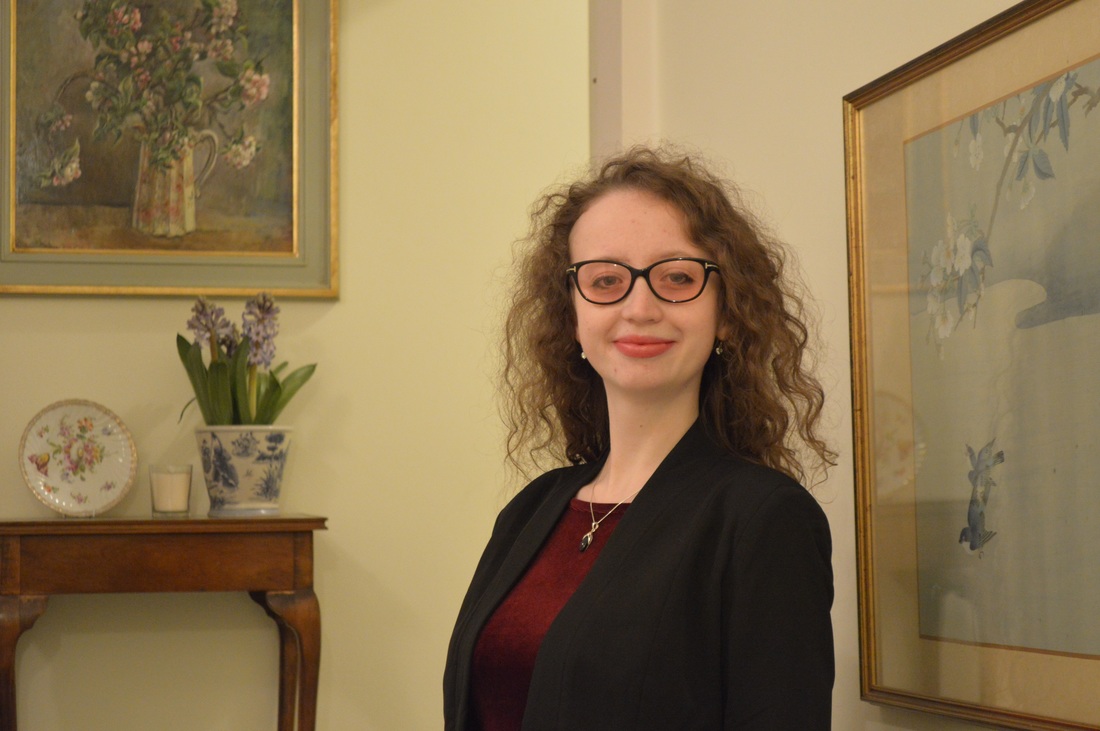
Rhiannon Randle has written music for orchestras and ensembles, but much of her work is for choruses and the stage. This is a concert performance of her 2015 one-act chamber opera Dido is Dead, which references Henry Purcell’s 1680’s opera Dido and Aeneas, which itself is based on Virgil’s Aeneid:
The composer has written:
The opera turns the myth of “Dido and Aeneas” upside down and presents an alternative outlet for Dido’s grief: divorcing her from the bonds of her own past, and freeing her from the burden which hundreds of years of culture has placed upon her.
A more extensive discussion of the opera by the composer appears in the video’s description.
This is TETRAGRAMMATON for piano quartet, composed in 2020 during lockdown:
See the video’s description for some comments by the composer.
Nia Imani Franklin (born 1993)
Nia Imani Franklin was born in Winston-Salem, North Carolina. She graduated from the East Carolina University with a degree in music composition in 2015, and the University of North Carolina School of the Arts with a Master of Music in 2017.
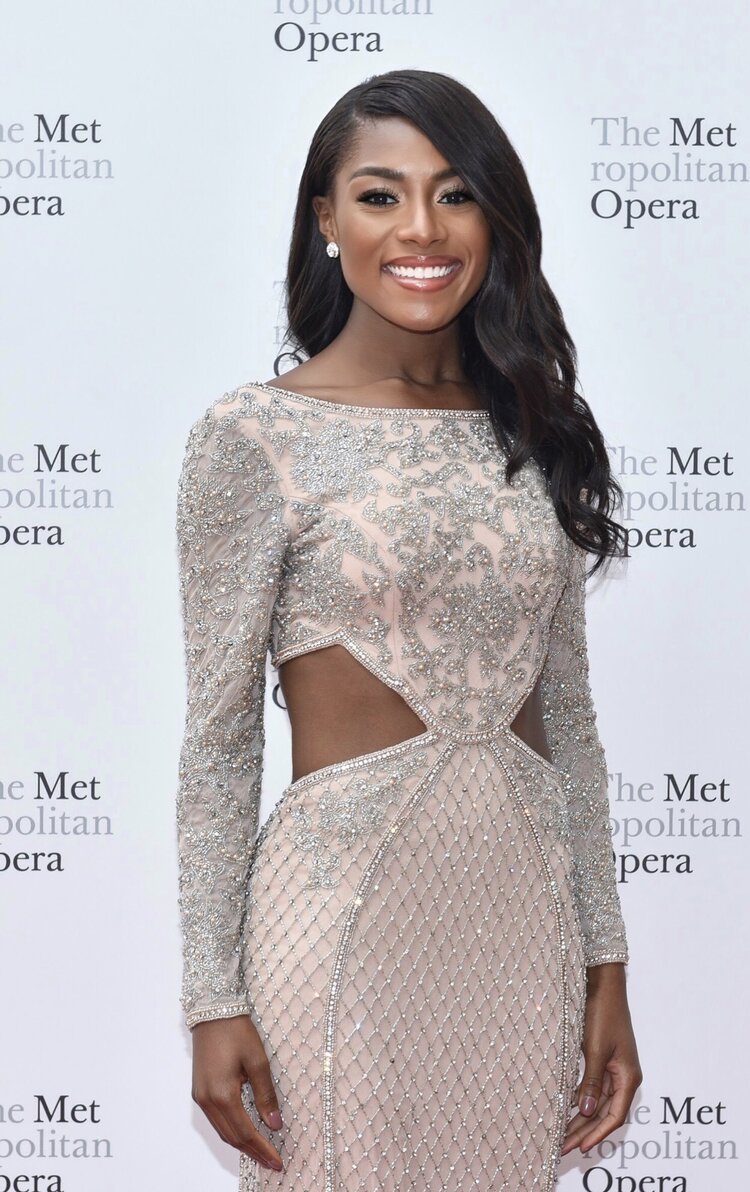
Nia Franklin is the founder of Compose Her, an advocacy group for supporting and encouraging female composers and musicians, and which offers music composition workshops for K-12 students.
Nia Franklin also has non-musical pursuits: In 2018 she was crowned Miss New York, and the following year won the Miss America pageant.
This is Nia Franklin’s first string quartet, entitled “Burgundy in Autumn.”
Salina Fisher (born 1993)
Salina Fisher is from Christchurch, New Zealand. She graduated from the New Zealand School of Music and then the Manhattan School of Music, where she earned a Master of Music in Composition. She is currently based in Te Whanganui-a-Tara Wellington.

Salina Fisher’s website states:
Her highly evocative music often draws on her Japanese heritage, as well as a fascination with the natural world. With a background as a violinist, Salina finds lyricism in unusual timbres and extended tonalities, with a sensitivity to detail and gesture. She is particularly interested in collaboration, and has worked closely with practitioners of taonga pūoro [traditional musical instruments of the Māori people of New Zealand], Japanese instruments, ceramics, and film.
Salina Fisher’s mostly composes for orchestras and chamber ensembles. Whether in small or large forms, her compositions are sensitively constructed and subtly structured, creating sonic landscapes that are fascinating, compelling, and moving.
Her 2015 orchestral work Rainphase (2015) (the composer has said) “draws on characteristics of water as rain: its shape and shapelessness, transparency and density, energy and calm, and its capacity for reflection in both a literal and emotional sense":
The composer appears on stage at the end of the performance.
Her most recent orchestral composition seems to be Murmuring Light from 2019. The title alludes to a light installation, which itself is based on murmuration — the large flight formations of starlings.
Salina Fisher writes:
While birds can symbolize individual freedom, in a murmuration they find safety in numbers, sensing each other’s direction and moving collectively. In Murmuring Light, I explore this delicate balance between the individual and the group. Through various musical parameters, the distinction between ‘individual’ and ‘group’ is heightened and blurred, in a continuous shift of light.
Here is her 2020 piano trio Kintsugi, which is named after the ancient Japanese art of repairing broken pottery with gold:
The composer writes:
I am personally drawn to kintsugi as a metaphor for embracing ‘brokenness’ and imperfection as a source of strength. This piece for piano trio is my expression and exploration of kintsugi, and involves musical fragmentation, fragility, mending, and finding beauty in the ‘cracks’.
Kristina Arakelyan (born 1994)
Kristina Arakelyan is from Armenia. She began studying piano at 7, and at 11 was given a scholarship to attend the Purcell School in England. She earned a BMus in Composition at the Royal Academy of Music, and a MSt in Composition at the University of Oxford. She is currently studying for her PhD in Composition at King’s College London.

Kristina Arakelyan is seen here performing her composition “To the Stars”
Lillie Harris (born 1994)
Lillie Harris was born in Canterbury, England. She graduated from the Royal College of Music and is currently based in South-East London.
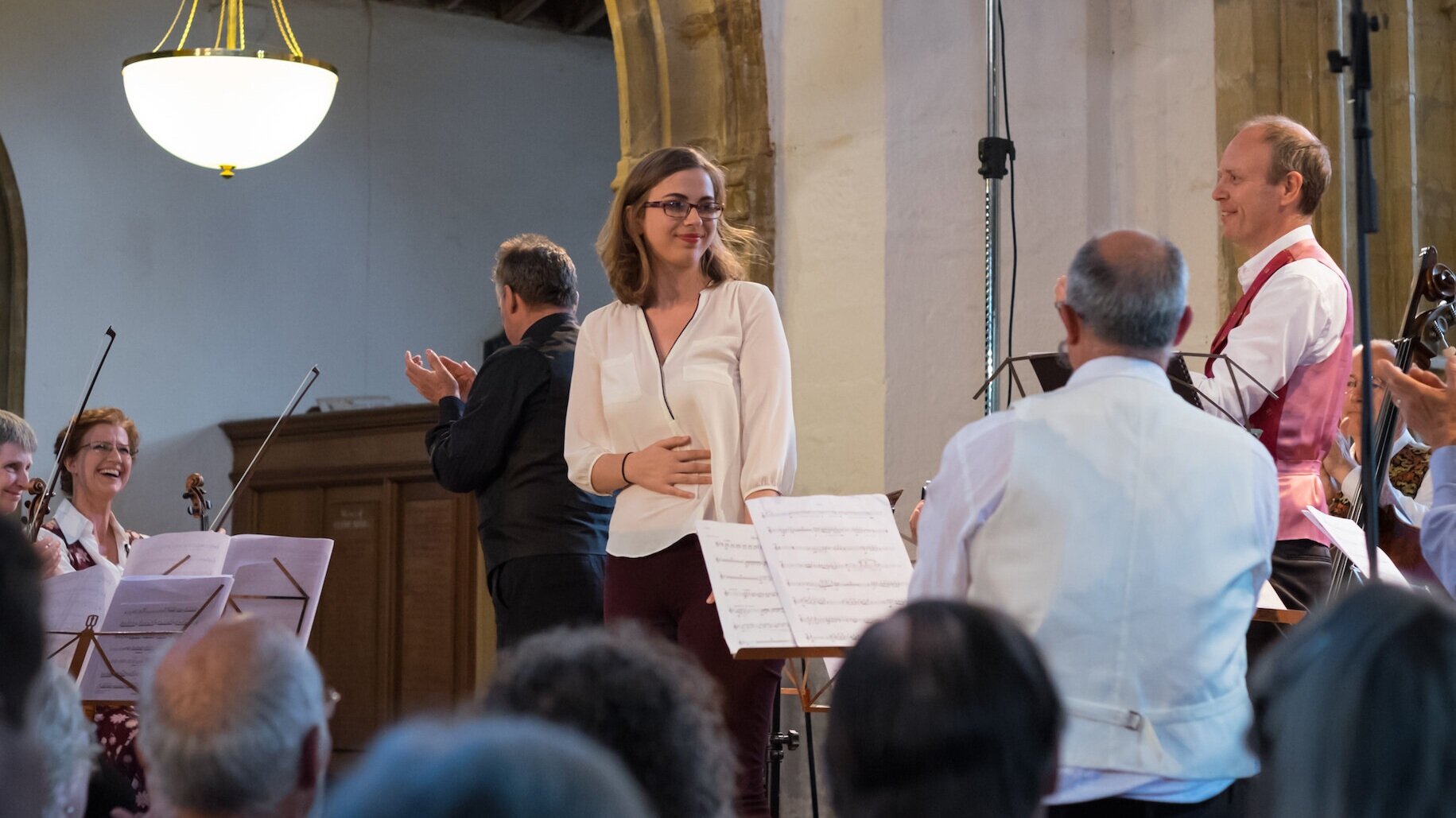
Lillie Harris’s website identifies her as a “Composer | Copyist | Engraver” who has devoted part of her career to the preparation of scores and parts. She has particularly focused on sustainable approaches to music printing, and she wrote the user manual for the Dorico music notation software.
Lillie Harris composed her 2018 orchestral work “Recall” for the Young Composer’s program of the London Philharmonic Orchestra. She has described the work like this:
The concept of recollection is the inspiration behind this piece. When we are unable to remember or explain a connection or sensation of familiarity instantly, we must go on a journey of frustration, revelation, and (hopefully) ultimately joy. Sometimes it only takes a few seconds, but sometimes it can take days to find the connection at last, and that process can be confusing and disorienting, convoluted and disarming. This piece explores the emotional experience of remembering, and in places reflects the bizarre electrical networks in our brains that bring us to the correct solution in the end.
She has also revealed that the composition uses the Medieval Latin “Pange lingua” plainsong melody “as a starting block and as inspiration for the final ‘complete’ phrase at the end of the piece.”
The composer appears onstage at the end of the performance.
Grace-Evangeline Mason (born 1994)
Grace-Evangeline Mason grew up in the West Midlands of England where she learned trombone, clarinet, and piano. She studied composition at the Royal Northern College of Music in Manchester, and at Oxford. She is currently pursuing a doctorate at the Royal Academy of Music in London.
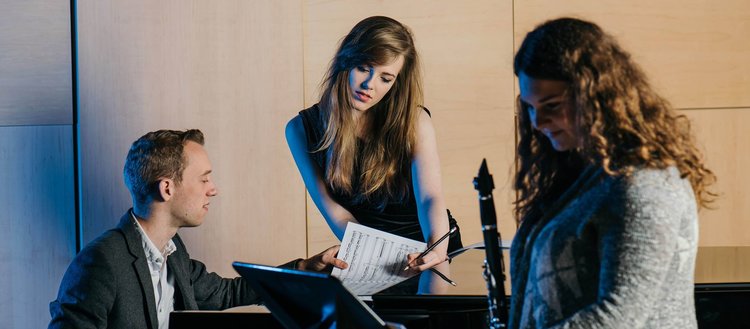
Grace-Evangeline Mason has composed music for orchestras, chamber ensembles, voice, and choruses, sometimes combined with electronics.
Her 2016 chamber opera The Yellow Wallpaper is based on the autobiographical 1892 short story by Charlotte Perkins Gilman. The narrator is a woman with (in her words) “a temporary nervous depression, — a slight hysterical tendency,” but whose physician husband has confined her to a room with grotesque yellow wallpaper that becomes increasingly threatening.
The composer appears at the end of the performance at the far left.
The composer herself introduces Fireworks (2018), a setting of the poem by Amy Lowell, sung by Ann Wilkes:
This is Glass Cathedrals a 2019 composition for solo harp:
Emily Bear (born 2001)
Emily Jordan Bear was born in Rockford, Illinois. She began learning piano at the age of 2 and made her professional debut as a pianist at 5. She has been composing since she was 3.

Emily Bear’s first album of original jazz compositions Diversity was released in 2013 under the production of her mentor, Quincy Jones. More recently, Emily Bear collaborated with Abigail Barlow in the 2021 concept album The Unofficial Bridgerton Musical inspired by season 1 of the Netflix series. However, a staged performance provoked a lawsuit from Netflix.
This is Emily Bear’s 2014 composition “Les Voyages” for piano and orchestra with the composer on the piano.
Alma Deutscher (born 2005)
Alma Deutscher was born in Basingstoke, England. She was home schooled by her father (an Israeli linguist) and her mother (a literary scholar). She began playing piano at the age of 2 and the violin at 3. By the age of 5 she was writing down her piano compositions. YouTube has an interview she did on Israeli television when she was 8 speaking German and Hebrew as well as English, improvising on the piano, and playing her own composition on the violin.

Alma Deutscher composes in traditional forms and idioms with a strong focus on melody. She has composed orchestral music, chamber music, piano works, songs, and opera. Her second opera Cinderella is based on her own libretto and premiered in 2016. (A 2017 production by Opera San José is available on DVD and Blu-ray.) In Alma Deutscher’s version, Cinderella is a talented but neglected composer, her stepmother runs an opera house, the two sisters are deficient divas, and the prince is a poet who finds Cinderella not with a shoe but with the beginning of one of her melodies that only she can complete. A new opera The Emperor’s New Waltz will premiere at the Salzburg State Theatre in 2023.
This is the 2017 premiere of Alma Deutscher’s three-movement Piano Concerto with the composer at the piano.
Alma Deutscher introduces this 2019 performance of her Waltz of the Sirens, revealing a bit of her attitude towards beauty in music:
The Future
Composers Missy Mazzoli and Ellen Reid founded the Luna Composition Lab, which “provides mentorship and performance opportunities to young composers who are female, non-binary or gender nonconforming.”
Here are six young composers who premiered their works online in April 2021: